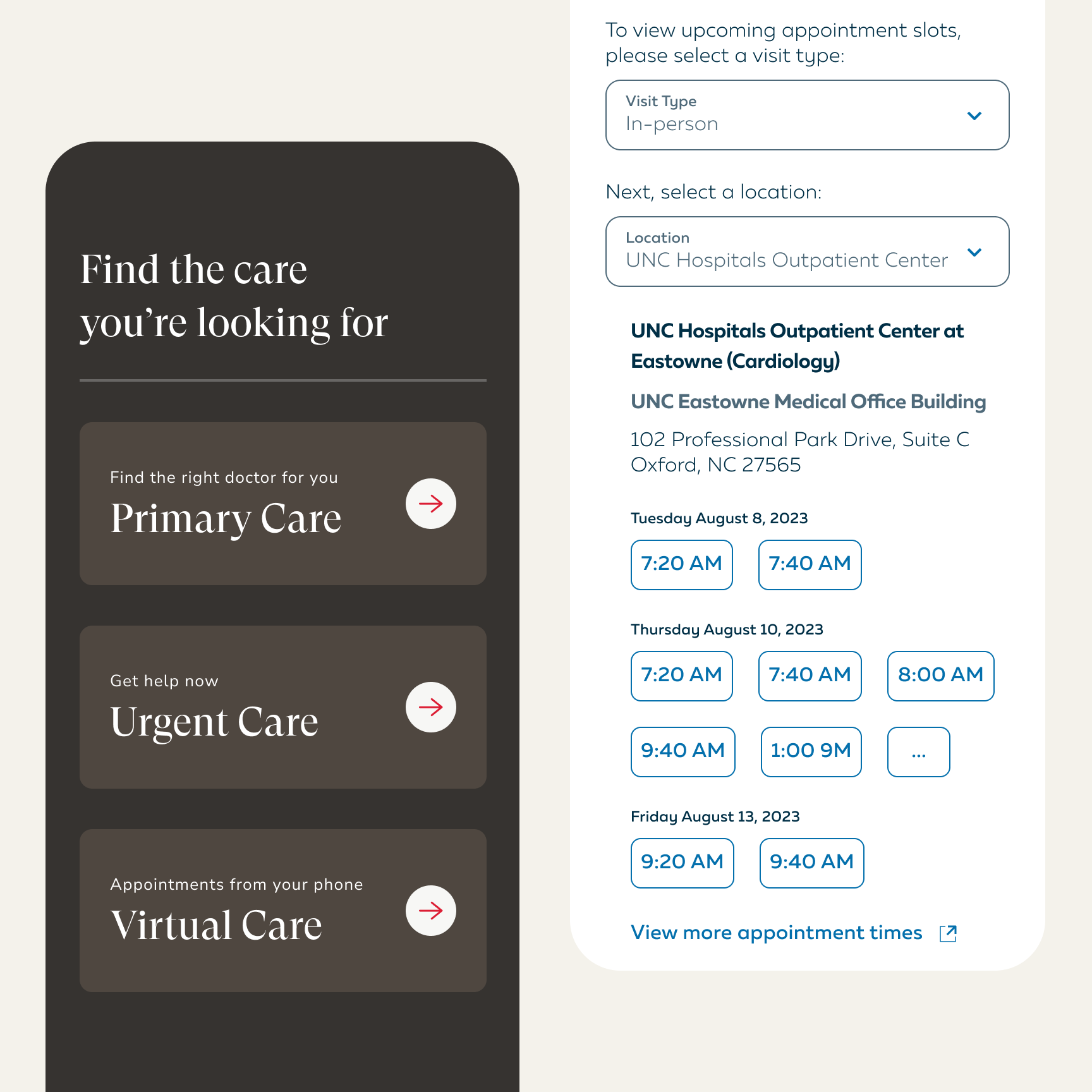Transformation is a journey, not a destination. If you’re not thinking of it that way, you’re already behind.
Fueled by advancements in technology, consumers have become accustomed to almost instant gratification and having their needs met quickly and efficiently across their digital platforms. Meeting these high expectations in the healthcare industry requires a change in approach.
Instead of treating customer experience as one-and-done projects, it’s essential to view it as a dynamic digital product, powered by an interconnected technological ecosystem. It’s an ongoing process of testing, learning, and adapting. The key lies in unifying the digital experience across diverse markets, tools, and channels—embracing the vast digital landscape, from social media to emerging technologies.
This comprehensive approach expands your reach and elevates your brand in ways that hold genuine meaning for your patients.
Successful Digital Transformation for Healthcare Companies
We sat down with leaders from the University of North Carolina Health (UNC Health) and Cedars-Sinai to discuss the implications of adopting a digital product mentality.
These leaders shared their insights on evolving from a website team to a product team—how to balance immediate needs and future innovation, leveraging consumer data for informed decision-making, and securing buy-in from organizational stakeholders without compromising the overarching vision.
The evolution from a static website-centric approach to a dynamic product-oriented mindset not only shapes the present but also paves the way for a future where the healthcare customer experience is a continuously refined, value-driven digital product. Let’s dig in to discover the secrets to successful digital transformation for healthcare companies.
The Transition to Digital Product Teams: A New Approach
Unlike the traditional siloed approach of website development teams, product development teams take on a more holistic role. They are not just tasked with delivering what is asked; instead, they are responsible for understanding customer needs, innovating, and bringing solutions to the market. The goal is to consistently deliver value to customers, marking a departure from the one-off project mentality.
Matt Schwabel, Executive Creative Director Marketing Technology & Operations, UNC Health, emphasized that shifting to a product team mindset involved staying curious, always testing, and selecting the right technology. The adoption of an atomic design system, for instance, future-proofed their approach, while aligning with business priorities was crucial. UNC Health embraced a more consumer-centric outlook to cater to their diverse audience.
On the other hand, Brandon Comer, Associate Director of Digital Design, Cedars-Sinai, noted that being “born in digital,” where they focused on UX and UI as foundational elements from the beginning, made the transition easier. Their authentic, digital-first brand resonated with their audience, bridging the gap between medical expertise and approachability.
Carrie Yutzy, Director, Web Strategy & User Experience, Cedars-Sinai, added that shifting from a traditional approach to a digital product mindset requires a fundamental shift in perspective and constant education, particularly in an industry traditionally averse to risk.
Prioritizing Requests and Stakeholder Demands
To scale their digital initiatives, both teams stressed the importance of shifting goals, adapting to changing stakeholder demands, and embracing a new mindset. An emphasis on research, testing, and data-driven improvements was a recurring theme. Prioritization was a confluence of customer needs, business priorities, and team input.
Matt stated that UNC Health considers inputs from their customers (gathered through research) their business stakeholders (in the form of corporate strategy and specific business focus areas/needs) and their team (who identify areas that will improve performance, workflows, efficiency, etc.) Top priorities are generally those where consumer and business needs merge or align, but in terms of weighting the consumer carries the strongest voice.
Brandon and Carrie added that having a strong product vision and having the confidence to fail and pivot are keys to being successful. Brandon said that having an executive champion who can provide support and resources to get the job done.
Closing Thoughts: Pioneering a Patient-Centric Healthcare
In conclusion, the discussion unveiled the pivotal role of digital transformation in healthcare’s future. By embracing a digital product mindset, healthcare institutions can transition from reactive to proactive, focusing on delivering exceptional patient experiences.
This shift is not just a technological overhaul; it represents a cultural change, a departure from old siloed systems to a unified, patient-centric approach. In this new era, healthcare organizations must be agile, open to change, and constantly innovate to meet the dynamic demands of their patients.
The journey is far from over, but as the industry leaders in this discussion demonstrated, the path to a patient-centric, digitally empowered healthcare system is already well underway.
Ms. Yutzy closed the conversation by stating, “Embracing change, avoiding shortcuts, and establishing non-negotiables were vital insights.” Matt Schwabel added, “Effective storytelling, education, and constant communication proved essential in garnering buy-in from internal and external stakeholders.”







